McAllen, TX Pollen and Allergy Report for Summer 2023
Pollen Allergy Trends in McAllen, TX
When is pollen lowest in McAllen, TX?

February
Lowest month total PPM
Avg. PPM
When is pollen highest in McAllen, TX?

March
Highest month total PPM
Avg. PPM
How does pollen in McAllen, TX compare to Texas?
McAllen has a lower average PPM than the state of Texas.
McAllen yearly avg PPM:
Texas yearly avg PPM:
How does pollen in McAllen, TX compare to the USA?
McAllen has a lower average PPM than the USA.
McAllen yearly avg PPM:
USA yearly avg PPM:
Is pollen worse this year in McAllen, TX?
Spring 2023 was worse than spring 2022.
Spring 2023 PPM:
Spring 2022 PPM:
Average PPM in McAllen, TX
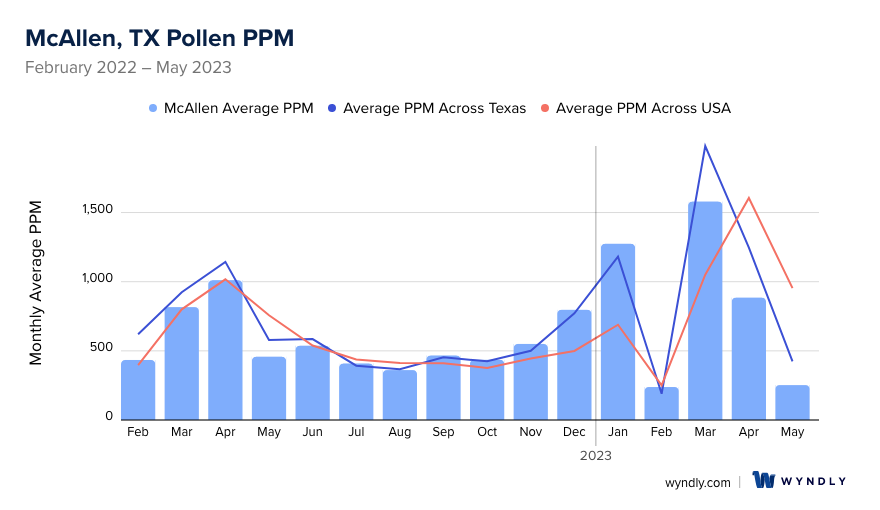
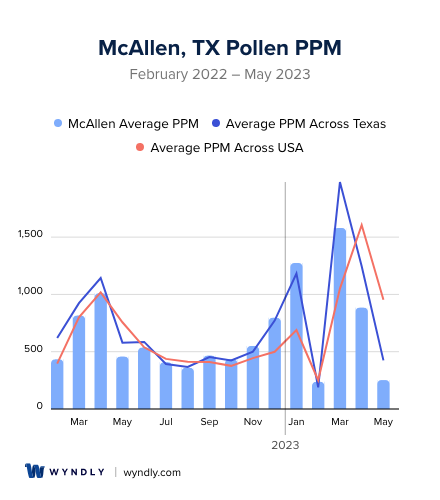
McAllen, TX Pollen and Allergy Breakdown by Month
Grass
When is grass pollen highest in McAllen, TX?
April has the highest grass pollen in McAllen, TX with an average PPM of
When is grass pollen lowest in McAllen, TX?
December has the lowest grass pollen in McAllen, TX with an average PPM of
Tree
When is tree pollen highest in McAllen, TX?
March has the highest tree pollen in McAllen, TX with an average PPM of
When is tree pollen lowest in McAllen, TX?
July has the lowest tree pollen in McAllen, TX with an average PPM of
Weed
When is weed pollen highest in McAllen, TX?
December has the highest weed pollen in McAllen, TX with an average PPM of
When is weed pollen lowest in McAllen, TX?
February has the lowest weed pollen in McAllen, TX with an average PPM of
McAllen, TX Pollen Monthly Breakdown by Pollen Type
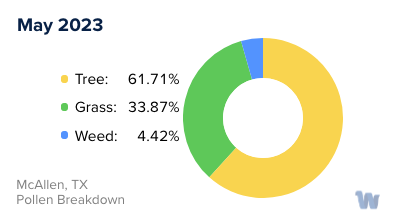
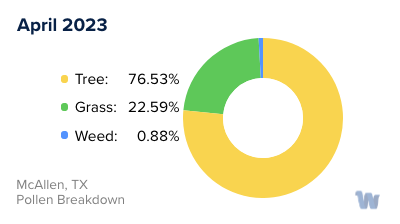
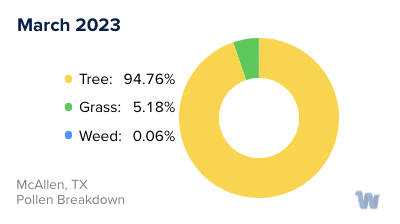
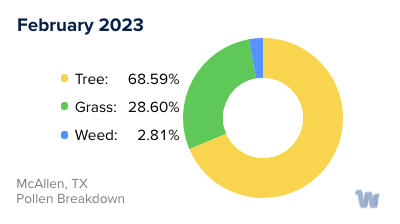


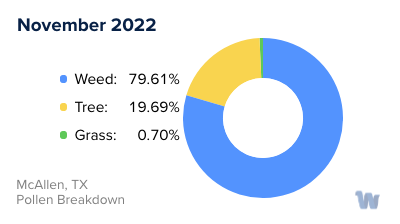
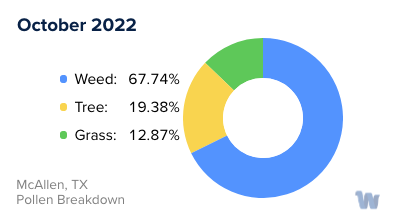
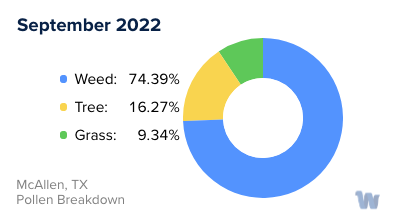
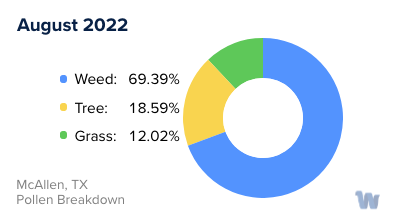
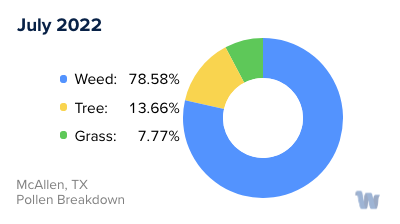



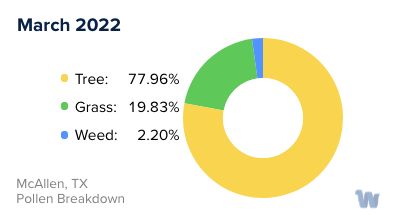

Pollen and Hay Fever in McAllen, TX
Pollen allergies, more commonly known as hay fever, can be a real nuisance for residents of McAllen, Texas. The source of this discomfort is often tiny grains of pollen released by trees, grasses, and weeds to fertilize other plants. In McAllen, the main culprits are certain types of trees, grasses, and weeds that release pollen into the air, contributing to hay fever and other allergic reactions.
The trees that produce allergenic pollen in McAllen include juniper, elm, oak, alder, pine, cottonwood, birch, ash, and maple. In addition, a type of grass known as Graminales and a weed called ragweed also contribute to the pollen count. These plants release large amounts of pollen, making them a significant concern for hay fever sufferers.
Understanding the seasons when these allergenic plants release their pollen can help prepare for and manage hay fever symptoms. While the specific timing can vary from year to year due to weather and other factors, there are general patterns for when pollen levels tend to peak in Texas. December, January, May, and September are the months when seasonal allergies are typically at their peak in Texas. During these times, pollen counts can rise, leading to heightened hay fever symptoms for many individuals.
In McAllen, as in other parts of Texas, the pollen season can be quite long, thanks to the region's warm climate and abundant vegetation. This can result in a prolonged period of discomfort for hay fever sufferers. However, keeping track of local pollen forecasts and understanding which types of pollen you are sensitive to can help you manage your symptoms effectively.
Remember, pollen counts tend to be lower in the evening, so adjusting your schedule can also help reduce exposure to pollen. While it might be challenging to completely avoid pollen exposure during the peak seasons, understanding when and where pollen levels are likely to be high can help you navigate the pollen season in McAllen, Texas, more comfortably.

